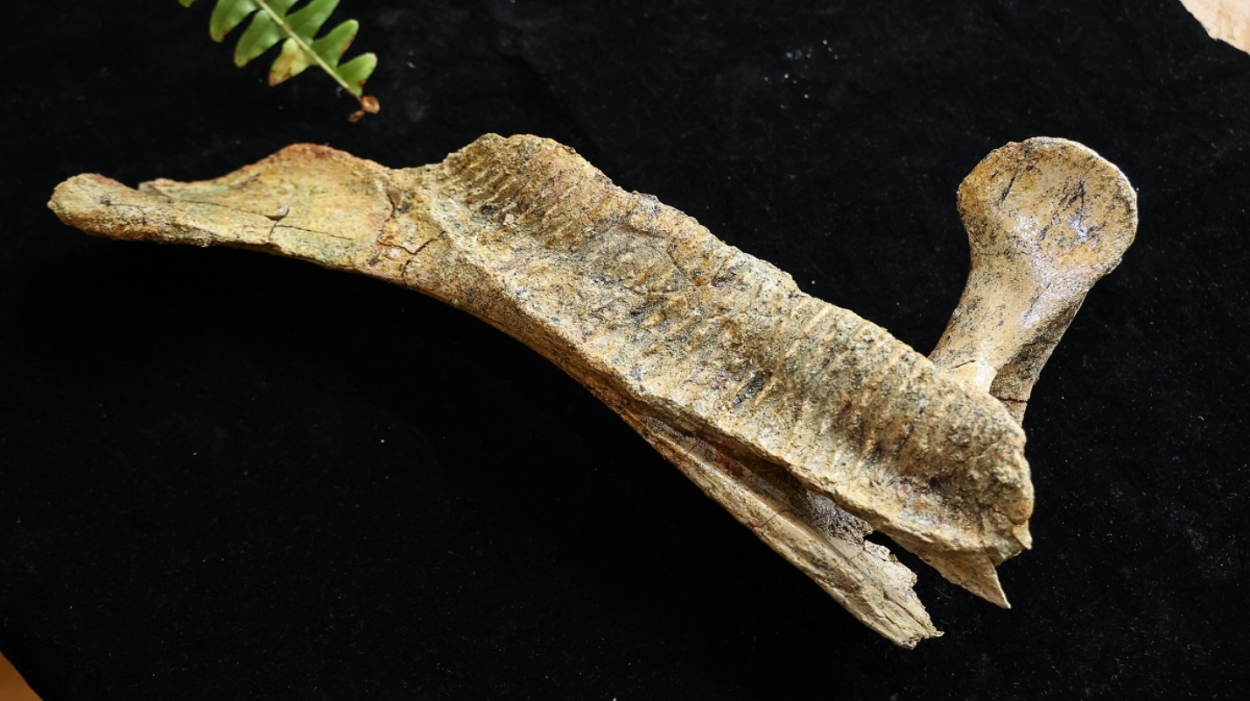Dinosaur bones donated to the Palaeontology Museum of St Petersburg University
The Palaeontology Museum of St Petersburg University has received valuable dinosaur remains. These are fragments of hadrosaur leg bones, teeth, jaws, and vertebrae found in Blagoveshchensk. The findings will be supplemented with elements made by a 3D printer.

The Blagoveshchensk dinosaur locality is situated within the city limits of Blagoveshchensk, Russia. It was discovered in the mid-20th century and has been actively developed since the 1980s by Russian and international palaeontologists. Jointly with St Petersburg University scientists, employees of the Institute of Geology and Nature Management of the Far Eastern Branch of the Russian Academy of Sciences have been conducting excavations and research at the site since 2022.
St Petersburg University scientists are major experts in palaeontology. At the end of 2022, together with their colleagues from the UK, they discovered and described the oldest complete skeleton of a tailed amphibian ’superhero’. And in 2023, dinosaur bones helped St Petersburg University palaeontologists confirm that in ancient times Chukotka had a milder climate.
’In honour of the 300th anniversary of St Petersburg University, the Palaeontology Museum of St Petersburg University was donated three gypsum monoliths containing hadrosaur remains, namely: several bones of the hind limb (a femur, a tibia and a fibula); an ilium; a dentary; a maxilla; a vertebra; and several teeth. These materials will underlie a new exhibition of the Palaeontology Museum of St Petersburg University dedicated to Russian Far East dinosaurs,’ Dmitry Grigoriev, Head of the museum, commented on the new acquisitions.
The Blagoveshchensk locality of prehistoric reptiles is unique for Russia due to the incredible concentration of large dinosaur bones on a vast area. Sixty six million years ago, a powerful mudflow formed a bonebed there of a whole herd of duckbill dinosaurs named hadrosaurids. Despite the abundance of bone remains, it is difficult to conduct fieldwork there, since the bones are mixed, broken, pressed into each other, so there is a high risk of damaging them.
The discovered bones are transported in plaster shells to avoid their deformation. Once in the laboratory, they are taken out of plaster, glued together and sealed with a fixative. After that, the missing bones of the foot are made by a 3D printer, and fasteners are prepared for the vertical installation of the dinosaur’s leg.
Hadrosaurids are a family of dinosaurs that lived in the Late Cretaceous. They are characterised by a dental ’battery’ containing rows of teeth and a keratinised beak. Many hadrosaurids have a cranial crest. Two genera of hadrosaurids were described in Blagoveshchensk, Amurosaurus and Kerberosaurus.
In addition, University specialists have prepared a unique online course titled ’The evolutionary history of vertebrates: from fish to dinosaurs and humans’ on the OpenEdu platform. Students will be able to ’travel’ along the evolutionary path of vertebrates, from long-extinct groups of dinosaurs to modern representatives of the fauna.
St Petersburg University, the oldest university in Russia, was founded on 28 January (8 February) 1724. This is the day when Peter the Great issued a decree establishing the University and the Russian Academy of Sciences. Today, St Petersburg University is an internationally recognised centre for education, research and culture. In 2024, St Petersburg University will celebrate its 300th anniversary.
The plan of events during the celebration of the anniversary of the University was approved at the meeting of the Organising Committee for the celebration of St Petersburg University’s 300th anniversary. The meeting was chaired by Dmitry Chernyshenko, Deputy Prime Minister of the Russian Federation. Among the events are: the naming of a minor planet in honour of St Petersburg University; the issuance of bank cards with a special design; the creation of postage stamps dedicated to the history of the oldest university in Russia; and the branding of the aircraft of the Rossiya Airlines to name just a few. Additionally, the University has launched a website dedicated to the upcoming holiday. The website contains information about outstanding University staff, students, and alumni; scientific achievements; and details of preparations for the anniversary.

